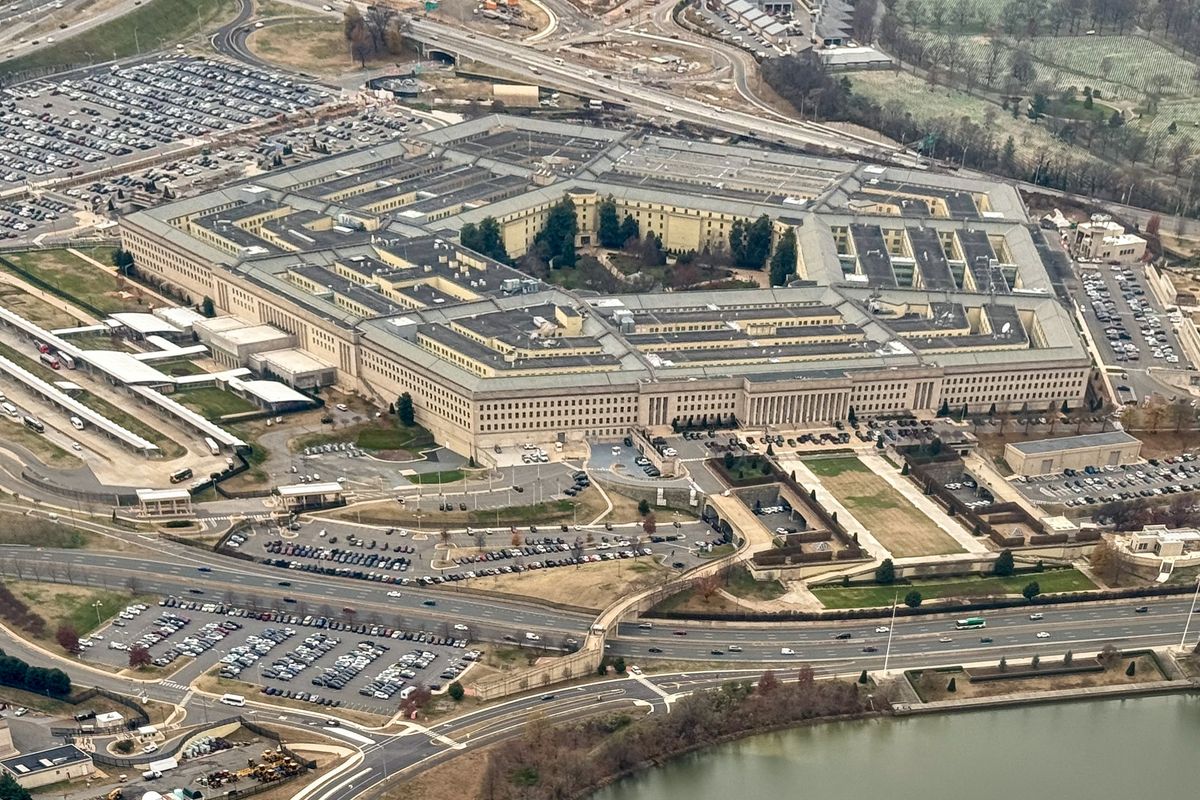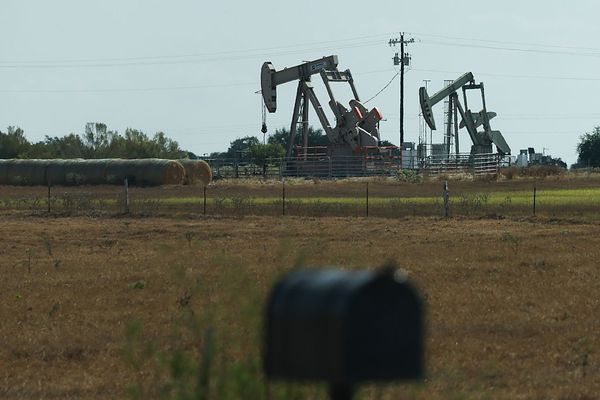According to a recent report by the National Defense Strategy Commission (NDS), the U.S. Department of Defense and the White House "have not yet articulated clear operational concepts for achieving U.S. security objectives in the face of ongoing competition and potential military confrontation with China and Russia."
The NDS is a non-partisan body charged by Congress to provide an independent review of the 2018 National Defense Strategy.
In a report released earlier this month, the NDS found that the DOD, "does not appear to have a plan for succeeding in gray-zone competitions against these actors, nor does the administration as a whole appear to have such an integrated plan. The United States is currently losing those competitions as Russia and China use measures short of war and employ multiple tools of statecraft to expand their influence and weaken U.S. alliances and partnerships."
The Cipher Brief tapped our experts for their take on China's military objectives as part of its 2018 Threat Report. Here's what you need to know:
Bottom Line: With the stated national goal of achieving great power status by 2050, China has embarked on an ambitious modernization effort to enhance both its conventional and unconventional military capabilities. China’s drive to augment its force projection has contributed to rising tensions in the Asia-Pacific region, with longer-term implications that threaten to reshape the existing international order and challenge America’s global hegemonic status.
Background: China’s military, known as the People’s Liberation Army (PLA), has engaged in modernization efforts since the end of the Cold War, but rapidly accelerated its advancements following the Taiwan Strait Crisis of 1996.
- The 1996 Taiwan Strait Crisis was the third installment of the feud between China and Taiwan over the latter’s sovereignty, with the first two incidents occurring in 1954 and 1958 respectively. The crisis began when the PLA conducted several missile tests near Taiwan, and the U.S. responded by sailing two aircraft carrier fleets through the Strait of Taiwan. Since the creation of the People’s Republic of China (PRC) in October 1949, Beijing has proclaimed a “one China” policy, asserting that the PRC is the sole legal government of China and Taiwan is a part of China, not an independent country. In April 1979, the U.S. recognized the PRC’s status, but only acknowledged China’s claim that Taiwan is a part of China, a policy which remains in effect today. Washington continues to maintain unofficial ties with Taiwan. The U.S. Department of Defense, in its 2012 annual report to Congress on “Military and Security Developments Involving the People’s Republic of China,” acknowledged that the Taiwan issue “remains the principal focus and driver of much of China’s military investment.”
- China’s military modernization doctrine, entitled “Military Strategic Guidelines for the New Period,” was introduced by then-President Jiang Zemin in January 1993 who expressed a need to develop a more capable military and sophisticated weaponry. In June 2004, former Chinese President Hu Jintao expanded the scope of the country’s military strategic guidelines. A new emphasis was placed on protecting China’s economic development, territorial integrity and domestic security, particularly in the maritime, space and cyber domains. The revisions also shifted the focus of the PLA to building a force capable of “winning local wars under the conditions of informationization,” which entailed the Chinese military using advanced computer systems, information technology, and communication networks to gain the upper hand over adversaries.
- Since becoming China’s president in March 2013, Xi Jinping has prioritized implementing his “China Dream” of national rejuvenation, which encapsulates an aspiration to establish a powerful and prosperous China by 2020, the 100th anniversary of the Chinese Communist Party, and a military power commensurate with the status of a great power by 2049, the 100th anniversary of the People’s Republic of China. Xi first introduced the idea when he was appointed Chair of China’s Communist Party in November 2012 and appears well-positioned to implement his strategy after China’s National People’s Congress approved the removal of the two-term limit on the presidency in March 2018, effectively enabling him to maintain an unchallenged grip on power.
- The PLA National Defense University published the country’s most recent military doctrine in May 2015, which highlighted a growing emphasis on maritime capabilities, the importance of space and cyber operations and the need for the PLA to protect China’s expanding reach overseas.
- Under Xi’s leadership, the PLA began to undertake substantial reforms in September 2015, including the slashing of 300,000 personnel, a reorganization of the PLA from seven military regions into five theater commands and the establishment of new command structures. The reforms are expected to continue until 2020 and are aimed at further improving the military’s efficiency and capabilities.
- During a visit to China’s naval headquarters in May 2017, Xi emphasized the need for China to become a great maritime power, saying that the navy should “aim for the top ranks in the world” and that “building a strong and modern navy is an important mark of a top-ranking global military.”
- China boasts the second largest defense budget in the world at $174.6 billion and spends more on its military than Japan, South Korea, the Philippines and Vietnam combined, although outside sources, including the U.S. Department of Defense, contend that this total could actually be much higher. China’s defense budget continues to grow rapidly as official figures released by China’s Ministry of Finance in early March 2018 showed an 8.1 percent increase from 2016 to 2017.
Doug Wise, Former Deputy Director, Defense Intelligence Agency
“Chinese military objectives primarily include the projection of sovereign power close to the landmass of China, recovering the ability to control or manage its sovereign sea space along Chinese borders, control of the South China Sea and projecting power throughout Asia – and to a lesser extent, globally.”
Adm. (ret.) Sandy Winnefeld, former Vice Chairman of the Joint Chiefs of Staff
“It is no secret that China has taken great strides in developing its military over the past two decades. Through observation, purchase, development and outright theft, the People’s Liberation Army has evolved faster than perhaps any nation’s military in history.”
Issue: To attain the status of a global power by 2050, China has invested heavily in upgrading its force posture, especially the capabilities of its navy and air force. China’s rapid military advancements are a worrying trend for the U.S. as they enable Beijing to threaten an increasing number of U.S. interests and allies in the Asia-Pacific and beyond.
- The Chinese Navy, known as the People’s Liberation Army – Navy (PLA-N), possesses more than 300 vessels, including surface combat ships, submarines, amphibious ships and patrol crafts. Beijing commissioned its first aircraft carrier, Liaoning, into service in September 2012, another went into service in April 2017 and Beijing may be in the process of building between two and six additional carriers. In addition, China is undertaking across-the-board naval modernization, including the construction of advanced anti-ship ballistic and cruise missiles, such as the hypersonic DF-21D, which has been referred to as the “carrier killer.”
- There is an ongoing controversy over China’s “nine-dash line,” which Beijing claims demarcates its island territories in the East and South China Seas. Beijing and its neighbors have staked sovereign and economic claims over various outposts in the East and South China Seas, sparking the disputes. In addition, China has built artificial islands in the South China Sea, particularly within the contested Spratly Islands, further complicating the issue. The U.S. has criticized China’s buildup of military facilities on the artificial islands and is concerned they could be used to restrict free movement through the South China Sea, an important trade route.
- China expanded its naval presence into Africa in August 2017 when it opened its first naval base in Djibouti’s Doraleh Port, situated just seven miles from the U.S. military base at Camp Lemonnier. China may also aim to construct a second overseas naval base at Pakistan’s southern Gwadar Port, located close to the Pakistani-Iranian border, although Chinese executives charged with developing the port refute such claims. China has undertaken significant construction of the Gwadar Port since striking a $46 billion economic agreement with Pakistan in April 2015, known as the China-Pakistan Economic Corridor (CPEC), which was later increased to $62 billion in April 2017.
- In the air domain, the PLA has concentrated on enhancing its surveillance, reconnaissance and defense systems, as well as developing cutting-edge, fifth-generation fighter aircrafts, such as the J-20 and FC-31. Additionally, Beijing has constructed a growing arsenal of unmanned aerial systems ranging from stealthy combat drones such as the Caihong-5 (CH-5)and the D3000, to networked-drone swarms, and possesses high-tech, anti-satellite weapons, such the SC-19 missile, which could threaten U.S. reconnaissance systems operating in the Asia-Pacific.
- China has also increased its participation in joint military exercises, affording it opportunities to boost its influence across different theatres and access to new weapon systems and foreign military practices.
Adm. (ret.) Jonathan Greenert, former Chief of Naval Operations, U.S. Navy
“China’s ‘recent’ naval capability upgrade is embedded in, and a part of, an overall strategy to improve PLA readiness and capability. To become a great power, China assessed its economic, diplomatic-influence and security posture. Looking northeast, east and south, China concluded it was vulnerable, contained by the U.S. and its allies, and it was least capable in the maritime domain.”
Adm. (ret.) Sandy Winnefeld , former Vice Chairman of the Joint Chiefs of Staff
“Beijing realizes that any contest in Asia between China and any adversary will first be a naval and air contest, and it has prepared accordingly by developing sophisticated counter-space, counter-air, and counter-maritime capabilities. Knowing their inherent advantages and disadvantages, they have invested wisely in systems designed to counter ours.”
Response: The U.S. has pursued military modernization efforts of its own to ensure that it maintains superiority over China and can ensure the freedom of navigation in the Asia-Pacific waterways. At the same time, Chinese expansionism has strengthened ties between the U.S. and its allies in the Asia-Pacific as they form a unified front to hedge against potential Chinese aggression.
- To maintain its competitive advantage over China at sea, the U.S. Navy has initiated measures to expand its fleet size from roughly 300 to 355 vessels. It has also aimed to enhance its capabilities through the design and integration of sophisticated weapon systems and technologies. Upgrades include equipping the Tomahawk land missile with new sensors that will allow it to better strike moving targets at sea, and providing naval vessels with the advanced Air and Missile Defense Radar system, which improves radar sensitivity and enables longer range detection.
- The U.S. Navy has also refocused its efforts on training service members, particularly in the aftermath of two separate collisions that occurred aboard the USS Fitzgerald and USS John S. McCain in the Western Pacific in June 2017 and August 2017 respectively, which resulted in the combined deaths of 17 sailors.
- The U.S. continues to sail warships in the South China sea to ensure the freedom of navigation operations and challenge excessive Chinese maritime claims. Beginning in May 2017, the U.S. conducted four such operations over a five-month span, suggesting that the Trump administration has increased the tempo of such operations. In January 2018, the U.S. Navy sailed the guided missile USS Hopper within 12 miles of the Scarborough Shoal, eliciting admonishment from China, and another U.S. Navy destroyer, the USS Mustin, sailed within 12 miles an artificial island built by China in the Spratly Islands in March 2018.
- China’s aggression in the South and East China seas has paved the way for the U.S. to further bolster ties with allies in the Asia-Pacific region. In November 2017, heads of state from the U.S., Australia, India and Japan all met in Manila to discuss how to ensure the freedom of navigation in both waterways. Suggested responses included the countries switching off sailing warships through the seas and increasing the frequency of joint naval exercise.
Adm. (ret.) James Stavridis, former NATO Supreme Allied Commander
“The U.S. needs a mix of confrontation and cooperation and an effective diplomatic strategy to lay aside a capable military in the region. Washington must continue to operate in strong support of freedom of navigation by conducting maritime and aviation patrols over Chinese-claimed international waters; strengthening partnerships and alliances with key nations in the region; building a much stronger partnership with India, an emerging superpower and potential ally; working on the technological and tactical counters to Chinese programs; and – conversely – working on creating a modus vivendi with China. We are a Pacific nation in every way and need to continue our engagement in the Indo-Pacific region.”
Looking Ahead: Though the United States continues to maintain a significant military advantage over China, Beijing is maneuvering to close the gap, forcing both countries to engage in a costly arms race. As China further builds its military capacity, it will increasingly threaten U.S. interests and challenge U.S. military supremacy, particularly in the Asia-Pacific region.
Join us March 24-26 for The Cipher Brief''s 2019 Threat Conference, in Sea Island, GA. Expert speakers include the Commander of U.S. Cyber Command, Gen. Paul Nakasone, the Principal Deputy Director of National Intelligence, Susan Gordon, Senior Cyber Advisor at the National Security Agency, Rob Joyce, and more...
See also, The Black Box of China's Chinese Intelligence, by Cipher Brief Expert Alasdair Gordon.
Analysis produced by Bennett Seftel as part of The Cipher Brief's Annual Threat Report.


















